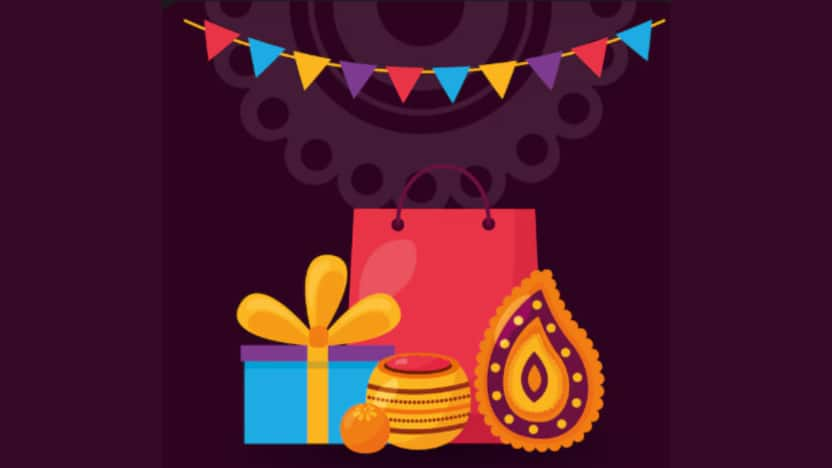India’s wedding season is fuelling a sharper, performance-led era of influencer marketing, where creators, data, and AI-driven storytelling turn festive engagement into measurable brand impact.

The beauty of Influencer Marketing 2.0 lies in its adaptability across industries, audiences, and campaign objectives. (Source: freepik)
India is set for the upcoming wedding season. The grooms and the brides but brands will not only celebrate the 45-day gala affair too. Brands across categories have geared up for marketing campaigns, with a major chunk of the budget being allocated to influencer marketing. From fake shadi to micro-dramas and quirky pop-ups, brands are ready to collaborate with content creators and capitalize on the huge influencer marketing market. The rise of digital creators is reshaping how brands engage with consumers, moving beyond traditional advertising to experiences that combine trust, relevance, and measurable outcomes.
According to the Kofluence Influencer Marketing Report 2025, the Indian influencer-marketing industry is expected to grow 25% year-on-year, surpassing ₹3,600 crore. Another report released by WPP Media,“India Influencer Marketing Report 2025, highlights the growing preference for long-term influencer partnerships (72%) and a strong inclination towards macro influencers (95%), driven by increasing concerns around content control and brand safety. Yet, this growth is not merely about more collaborations; it signals a shift toward smarter, performance-driven partnerships. Influencer Marketing 2.0 is here, blending influencer storytelling with affiliate and performance marketing to power a new festive economy.
For decades, advertising was synonymous with star-studded campaigns, glamorous spectacles that often struggled to connect with audiences on a personal level. That model is changing. The WPP Media reports also puts a spotlight on the shift from follower count to content quality and creator relevance, where 85% now prioritize content quality when selecting influencers.
Today, story-led content is overtaking star-led campaigns. Micro- and regional creators, those who speak the audience’s language, culturally and literally are driving higher engagement and stronger purchase intent. In fact, more than 52% of marketers now prefer micro-influencers (10K–100K followers) for regional or hyper-local storytelling.
Audiences this festive and wedding season don’t just want to watch film and television stars doing archaic endorsement videos, but they want to watch common people who have risen to popularity with their own creativity in this digital world, know the best brand deals through their storytelling, where to get the best deals, and which brands align with their values. Creators bridge this gap, merging emotion with actionable information, and influence with intent.
When storytelling seamlessly connects to measurable actions; clicks, installs, or purchases, the result is a compounding effect on ROI. Campaigns that integrate creators into performance workflows consistently outperform those treating influencer activity as a one-off visibility boost.
Festive and wedding marketing today is no longer siloed. It thrives at the intersection of influencer marketing, affiliate programs, and performance marketing.
Influencers spark discovery and trust, creating emotional resonance and social proof.
Affiliate marketing turns engagement into measurable outcomes through trackable links and promo codes.
Performance marketing scales high-performing content via analytics, AI optimization, and programmatic buying.
The outcome is a holistic marketing funnel: influence converts into action, and campaigns become both creative and accountable.
Data and AI are key enablers in this ecosystem. Platforms now allow brands to identify creators whose audiences closely align with their objectives, while affiliate tracking ensures every click and conversion is attributed precisely. This shift signals a move from “brand awareness” to “brand accountability.”
Technology is quietly transforming Diwali campaigns, particularly through the rise of regional creators. With over 70% of India’s online users consuming regional-language content, hyper-local creators have emerged as vital growth drivers.
Brands are responding: 40–50% of festive budgets are now being allocated to Tier-2 and Tier-3 markets. AI-driven tools help pinpoint micro-influencers with highly engaged communities, moving away from vanity metrics to focus on authenticity and meaningful impact.
Influencer Marketing Across Sectors: Tailoring Voices for Every Brand
The beauty of Influencer Marketing 2.0 lies in its adaptability across industries, audiences, and campaign objectives. Different sectors are now leveraging creator partnerships not just for visibility, but for credibility and conversion.
Take Nykaa, for instance. The brand has built a content-first ecosystem through beauty and lifestyle influencers who offer authentic product tutorials and reviews, turning discovery into direct purchase intent. During festive and wedding seasons, Nykaa amplifies regional beauty creators to tap into Tier-2 audiences seeking festive looks and local brand recommendations.
In contrast, Zepto uses micro and meme influencers to drive conversations rather than conversions, blending humour with brand storytelling to stay top-of-mind during high-order festive or wedding seasons. Its use of contextual, creator-driven humour keeps the brand relatable while reinforcing its mass-market appeal from organizing fake wedding to pop-up stalls in real-life wedding. Such collaborations generate organic recall and engagement.
Meanwhile, OnePlus collaborates with tech and lifestyle creators to showcase innovation and design in action not through product specs, but through real-life experiences. This strategy turns influencer storytelling into a trust-building exercise, helping bridge the gap between aspirational tech and everyday use.
These examples underline a key truth: there’s no one-size-fits-all approach to influencer marketing. Whether it’s beauty, food delivery, or tech, the most effective collaborations are those that align a creator’s voice with the brand’s purpose, transforming endorsements into authentic experiences that audiences believe, share, and act on.
The definition of “influencer” continues to evolve. Virtual creators, AI-powered content discovery, and creator-commerce collaborations are set to redefine how brands connect with consumers. Yet one constant remains: the power of authentic storytelling rooted in human connection.
Empower your business. Get practical tips, market insights, and growth strategies delivered to your inbox
By continuing you agree to our Privacy Policy & Terms & Conditions
